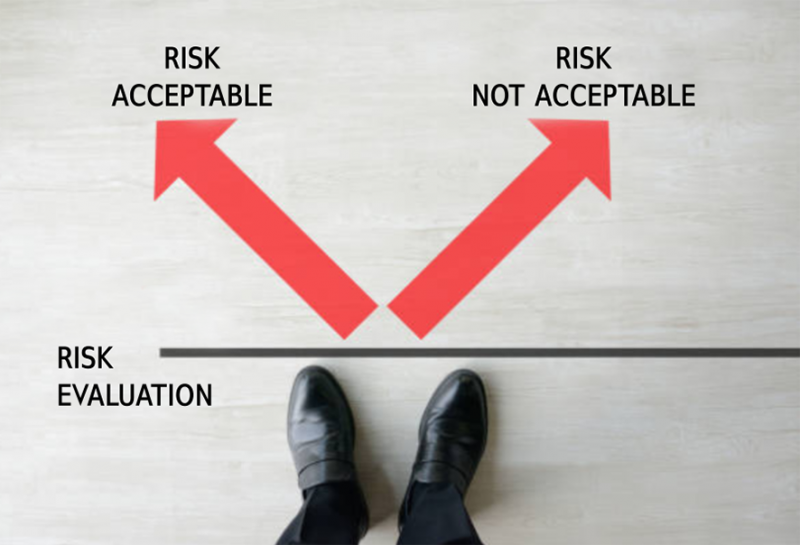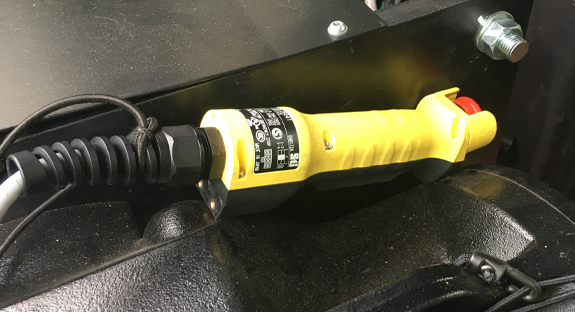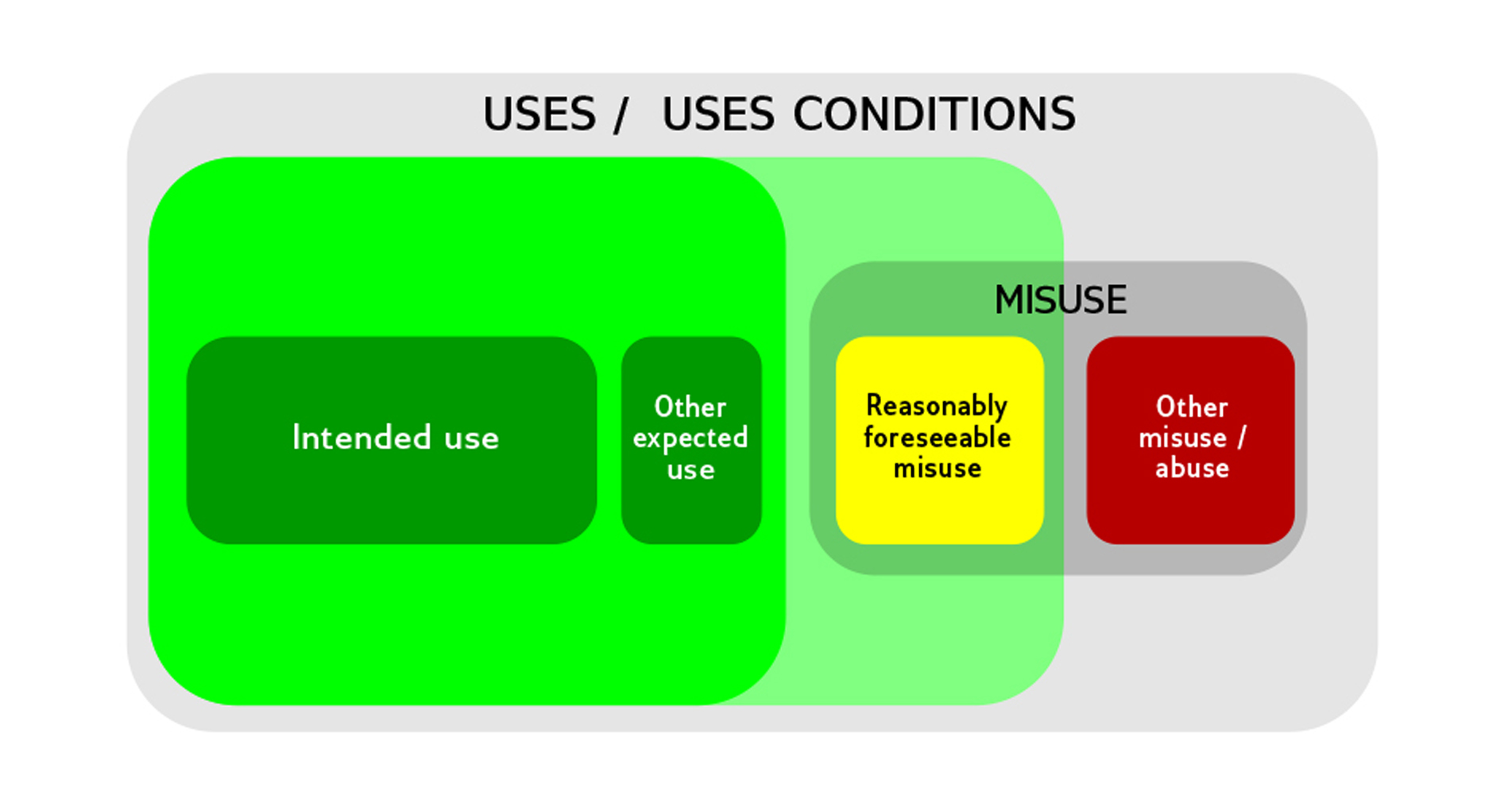A summary of: Safety of machinery – General principles for design – Risk assessment and risk reduction
In part 1 of this series, we introduced the risk assessment process and explained how EN ISO 12100:2010 can help machinery designers and manufacturers make their machinery safe with the use of a risk assessment. In part 2, we go a bit deeper and explain in more detail how the risk estimation and risk evaluation guidelines are applied via EN ISO 12100:2010 in the entertainment industry.
Risk Estimation
After the designer has identified the hazards, they must proceed with the risk estimation.
The risk estimation is probably the most delicate part of the assessment since it asks the designer to determine if the risks related to the considered hazards are as low as practicably possible. The risk estimation will be carried out for each hazardous situation by determining the elements of risk that are given in section 5.5.2 in EN ISO 12100:2010 and must also consider the aspects in section 5.5.3 during a risk estimation.1
EN ISO 12100:2010 deems that the Elements of risk are vital in evaluating a risk and divides them into two categories:
a. the severity of harm;
b. the probability of occurrence of that harm, which is a function of
- the exposure of person(s) to the hazard,
- the occurrence of a hazardous event, and
- the technical and human possibilities to avoid or limit the harm.2
The standard explains that the severity for the severity of harm can be estimated by examining the severity of injuries or damage to health, and must also analyse the extent of harm to one person or several persons. This means that from the identified hazard, the risk from the severity of harm that is most likely to happen is the one that should be considered. However, the standard also states that the highest foreseeable severity should also be taken into account, even if the probability of such an occurrence is not high.3 (See Blumano Article: Machinery Risk Assessment: Estimation of the Severity of Injury.)
Nonetheless, the probability of occurrence of harm is also complex, and as stated above, is divided into three subcategories: exposure of persons to the hazard, occurrence of hazardous event, and possibilities of avoiding or limiting harm.
The exposure of persons to a hazard is related to the probability of occurrence of harm and can be affected by the following factors when estimating the exposure:
- the need for access to the hazard zone (for normal operation, correction of malfunction, maintenance or repair, etc.),
- the nature of access (for example, manual feeding of materials),
- the time spent in the hazard zone,
- the number of persons requiring access, and
- the frequency of access.
(See Blumano Article: Machinery Risk Assessment: Frequency of Exposure.)

Figure 1: During the risk evaluation it needs to be determined if the risk is acceptable or not acceptable.
For the occurrence of a hazardous event, it influences the probability of the occurrence of harm and the following factors must be taken into consideration when conducting the risk estimation.
- reliability and other statistical data,
- accident history,
- history of damage to health, and
- comparison of risks (see 5.6.3).4
The possibility of avoiding or limiting harm can impact the probability of occurrence of harm and the following factors should be should be considered when estimating the possibility of avoiding or limiting harm during a risk estimation: different persons exposed to the hazard…, how quickly the hazardous situation could lead to harm…, any awareness of the risk…, the human ability to avoid or limit harm…, and practical experience and knowledge.5
Nevertheless, there are some other aspects to be considered during the risk estimation which are the persons exposed, type, frequency and duration of exposure, relationship between exposure and effects, and human factors. EN ISO 12100:2010 explains that training, experience and ability can affect risk but that none of these factors are suitable as a substitute for the elimination of hazards, using inherently safe design measures or safeguarding for risk reductions wherever these protective measures can be practicably implemented.6
Some other aspects are the suitability of protective measures, possibility of defeating or circumventing protective measures, ability to maintain protective measures, and information for use.
Suitability of Protective Measures
During the risk estimation, the circumstances which can result in harm should be identified, and when suitable use quantitative methods to compare alternative protective measures and provide information that can assist with the selection of the appropriate protective measures.
Possibility of defeating or circumventing protective measures – states that the protective measures must allow for the easy use of the machinery and do not hinder the machinery’s intended use so that protective measures are not bypassed. Some examples of these protective measures being bypassed are when they slow down production or interfere with another activity or the user’s preferences, when they’re hard to use, when people who are not the operator are involved, or when the user does not recognise the protective measures or they are considered to be unsuitable for their function. This section also says that programmable electronic systems can introduce additional possibilities of defeat or circumvention if access to safety-related software is not appropriately restricted by design and monitoring methods.
Ability to maintain protective measures – the risk estimation should look at whether the protective measures can be kept in a condition that is needed to supply the required protection level. If this cannot be easily maintained, then the possibility of defeat or circumvention of the protective measures increase so that the machinery can continued to be used.
Information for use – the risk estimation should consider the information for use when it is available.7

Figure 2: Following the Risk Assessment steps EN ISO 12100:2010 helps to claim presumption of conformity with the Machinery Directive.
Risk Evaluation
A risk evaluation must be done after the risk estimation is complete and be used to determine if a risk reduction is required. During the evaluation of the estimated risks, the designer will define the risk reduction architecture and assess the suitability of the intrinsic control measures. If a risk reduction is required, then the steps from the Chapter 6: Risk Reduction section should be followed. The designer should also check if additional hazards from the protective measures have been added or if the risks have been increased when the new protective measures are applied. If this is the case, then they should be included in the risk assessment as identified hazards with the appropriate protective measures required to address them.8 In order to successfully complete a risk evaluation, the correct conditions must be met to have an adequate risk reduction and a comparison of the risks must be completed.
Adequate Risk Reduction – the steps from the Risk Reduction section are essential in achieving an adequate risk reduction and it is achieved when:
- all operating conditions and all intervention procedures have been considered,
- the hazards have been eliminated or risks reduced to the lowest practicable level,
- any new hazards introduced by the protective measures have been properly addressed,
- users are sufficiently informed and warned about the residual risks (see 6.1, step 3),
- protective measures are compatible with one another,
- sufficient consideration has been given to the consequences that can arise from the use in a nonprofessional/non-industrial context of a machine designed for professional/industrial use, and
- the protective measures do not adversely affect the operator’s working conditions or the usability of the machine.9
Comparison of risks – is a part of the risk evaluation process in which the related risks to the machinery or machinery parts can be compared to their similar counterparts if they meet the following:
- the similar machinery is in accordance with the relevant type-C standard(s);
- the intended use, reasonably foreseeable misuse and the way both machines are designed and constructed are comparable;
- the hazards and elements of risk are comparable;
- the technical specifications are comparable;
- the conditions for use are comparable.
However, EN ISO 12100:2010 asserts that using this method does not remove the need to follow the risk assessment process.10
Furthermore, in part 3 we will discuss the EN ISO 12100:2010 guidelines regarding risk reductions and protective measures.
.
.
References
1. EN ISO 12100:2010 – 5 – Risk Assessment – 5.5 Risk Estimation: 5.5.1 – General
2. EN ISO 12100:2010 – 5 – Risk Assessment – 5.5 Risk Estimation: 5.5.2 Elements of risk: 5.5.2.1 General
3. EN ISO 12100:2010 – 5 – Risk Assessment – 5.5 Risk Estimation: 5.5.2 Elements of risk: 5.5.2.2 Severity of Harm
4.EN ISO 12100:2010 – 5 – Risk Assessment – 5.5 Risk Estimation: 5.5.2 Elements of risk: 5.5.2.3 Probability of occurrence of harm: 5.5.2.3.1 Exposure of persons to the hazard & 5.5.2.3.2 Occurrence of a hazardous event
5. EN ISO 12100:2010 – 5 – Risk Assessment – 5.5 Risk Estimation: 5.5.2 Elements of risk: 5.5.2.3.3 Possibility of avoiding or limiting harm
6. EN ISO 12100:2010 – 5 – Risk Assessment – 5.5 Risk Estimation: 5.5.3 Aspects to be considered during risk estimation: 5.5.3.1 Persons exposed, 5.5.3.2 Type, frequency and duration of exposure, 5.5.3.3 Relationship between exposure and effects, 5.5.3.4 Human factors
7. EN ISO 12100:2010 – 5 – Risk Assessment – 5.5 Risk Estimation: 5.5.3.5 Suitability of protective measures, 5.5.3.6 Possibility of defeating or circumventing protective measures, 5.5.3.7 Ability to maintain protective measures, 5.5.3.8 Information for use
8. EN ISO 12100:2010 – 5 – Risk Assessment – 5.6. Risk Evaluation: 5.6.1 General
9. EN ISO 12100:2010 – 5 – Risk Assessment – 5.6 Risk Evaluation: 5.6.2 Adequate Risk Reduction
10. EN ISO 12100:2010 – 5 – Risk Assessment – 5.6 Risk Evaluation: 5.6.3 Comparison of Risks




